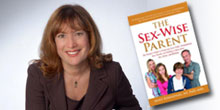On a beautiful Sunday morning, I was enjoying a walk in a park, admiring the views, the gardens, the art and the variety of people, when something caught my eye and took my thoughts right back to work. A mom was strolling with her two young children and both kids had their first names written in huge letters on the back of their tie-dyed sweatshirts.
I think this is a dangerous thing to do. Twenty years ago, when law enforcement stressed stranger-danger and abduction-prevention advice to parents, a cardinal rule was to avoid personalizing children’s clothes. The fear was that predators could call kids by their first names and engage them through familiarity.
While I’m the first to remind anyone who will listen that the overwhelming majority of sexual abuse against children is perpetrated by someone they know, there’s absolutely no reason why we should we give any predator an advantage. Kids need to know about boundary-pushing relatives or acquaintances who prey on children and youth, and that strangers can be predators as well. Adults can turn to the Take 25 Campaign from the National Center for Missing and Exploited Children as a resource to start the conversation in their family using the materials available in English and Spanish.
Predators who would take advantage of a child’s name on her clothing often feign familiarity and indicate that the parent sent them to pick the child up. Another recommendation that bears repeating is for families to specify a code word that a child should expect to hear from any adult claiming to know the child or his family. Preparation is so important; young children — and many adults — are incapable of outwitting a charming sociopath.
Stranger-danger is easier for parents to talk about than sexuality but that conversation is not enough. Children will want to know what a stranger can do that is so scary and if we don’t explain in developmentally appropriate concepts, kids will fill in the blanks. They have many fears and any child with access to the media knows that sex crimes occur. Please don’t let your children share the experience of a child who believed that a stranger might ‘rake’ her, which she thought meant being beaten with a garden tool. The comprehensive discussion about child safety might come after sharing the personal, positive aspects of sexuality and this resource can provide guidance. Then a safety discussion can cover the fact there are people who try to abuse a child’s personal and private sexuality. The first discussions with their parents about sex should revolve around love and intimacy, not stranger danger and anxiety.
Monogram your kids’ robes and pajamas, and discuss why you don’t want their names on their sweatshirts and jackets. It can provide another opportunity to foster the kind of discussions that strengthen families and protect children.
This article first appeared in the Healthy Kids blog of philly.com at http://www.philly.com/philly/blogs/healthy_kids/Dont-give-a-predator-an-advantage.html

